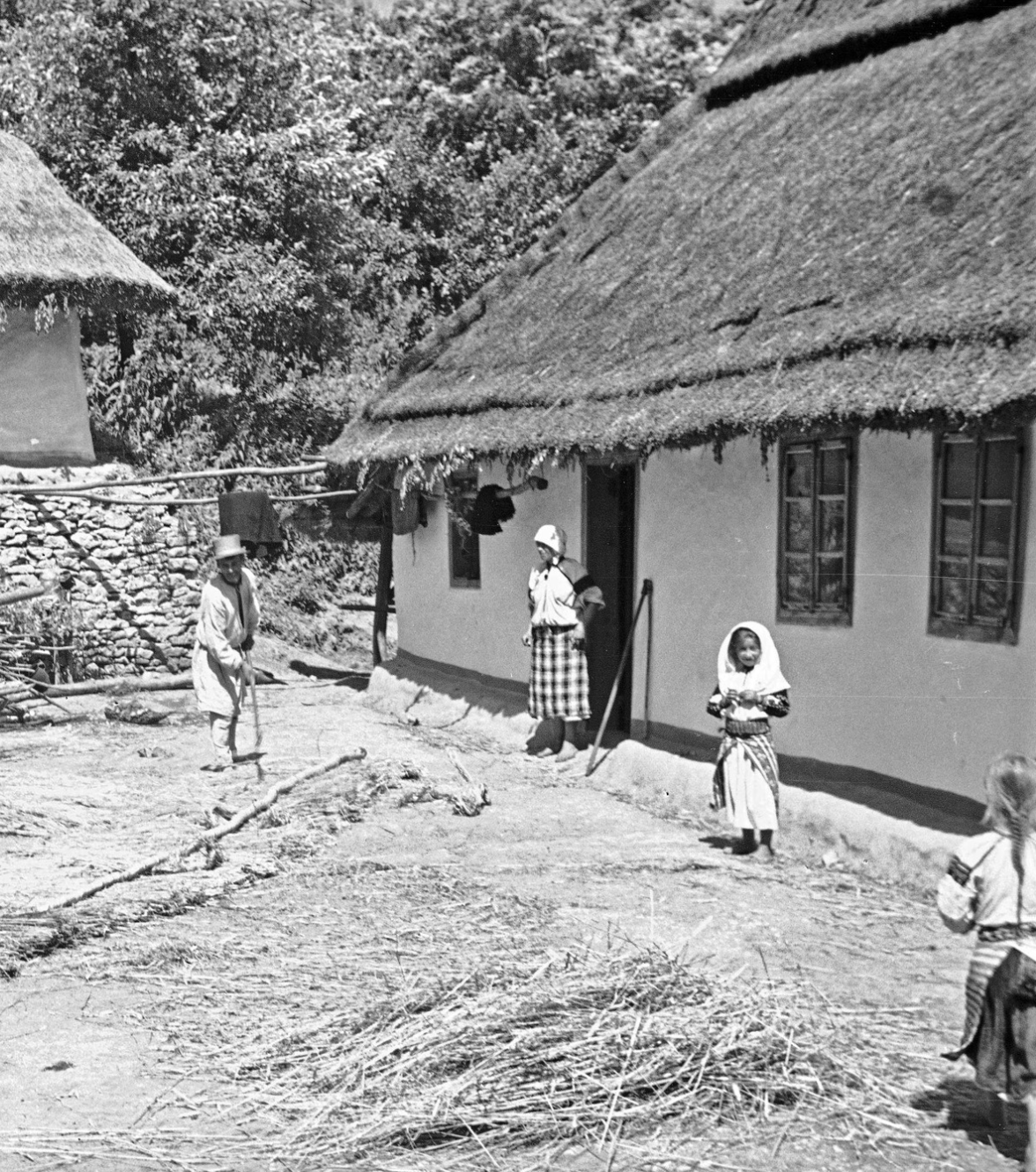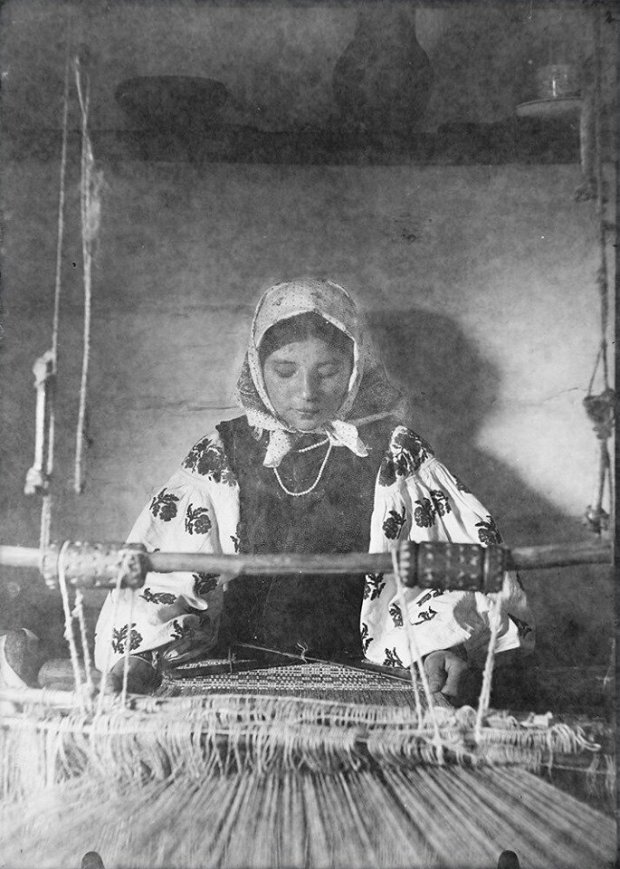Timeless Ukrainian Textile Craft
Extensive research, including countless books, articles, consultations with Ukrainian folklorists, and insights from the memories of the past, allowed the restoration of the process and technique our ancestors followed to create garments in a regenerative and sustainable manner as a close-knit community.
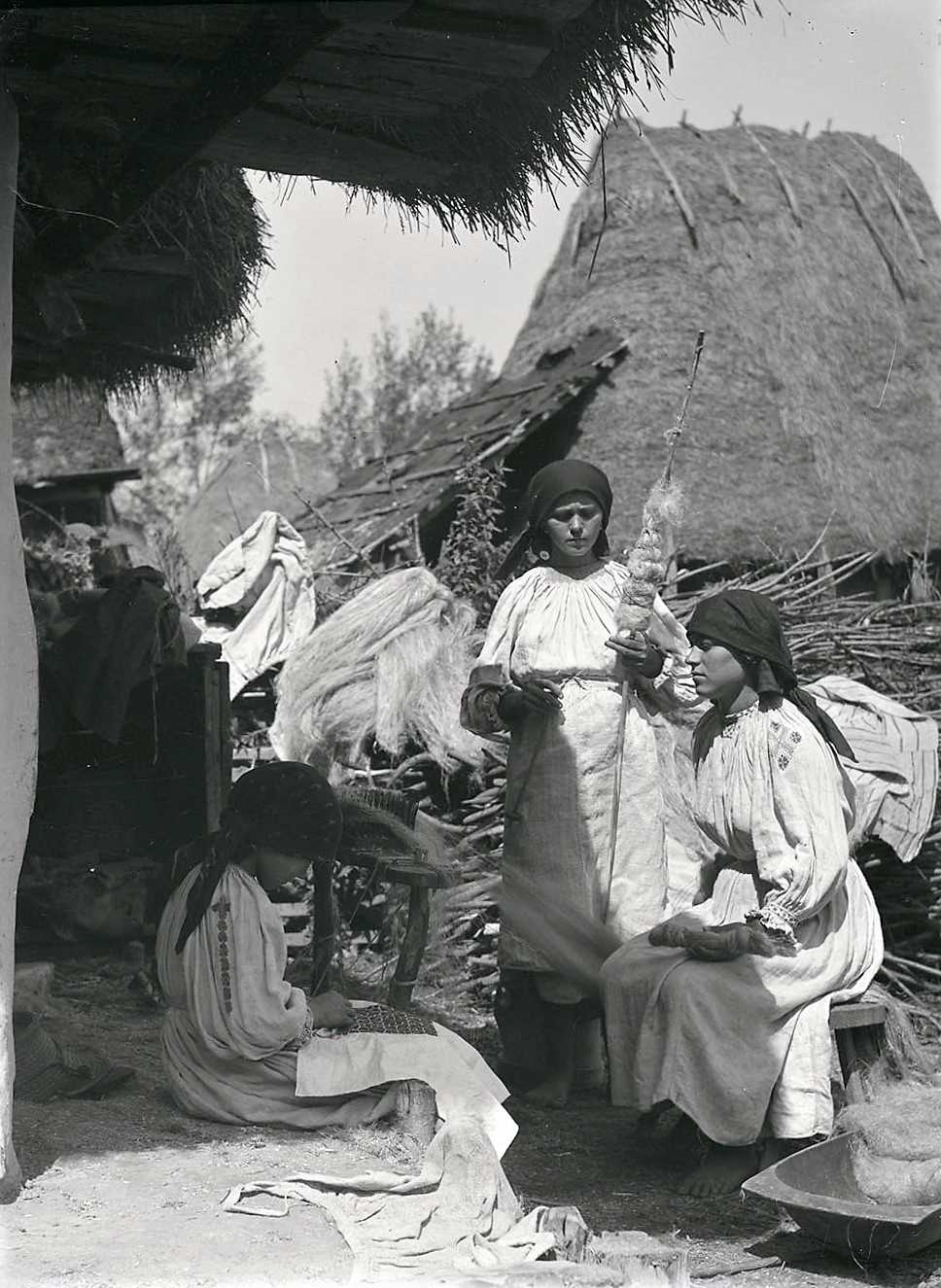
Regenerative agriculture
Growing hemp regeneratively is known to bring benefits to the soil, preserve biodiversity, and minimise water usage. The plant requires no pesticides or fertilisers and can grow well alongside other crops. Ukrainians cultivated linen, hemp, and even nettle for textile purposes. However, hemp is more resistant as a plant, capable of withstanding harsh weather conditions and adapting to practically any type of soil.
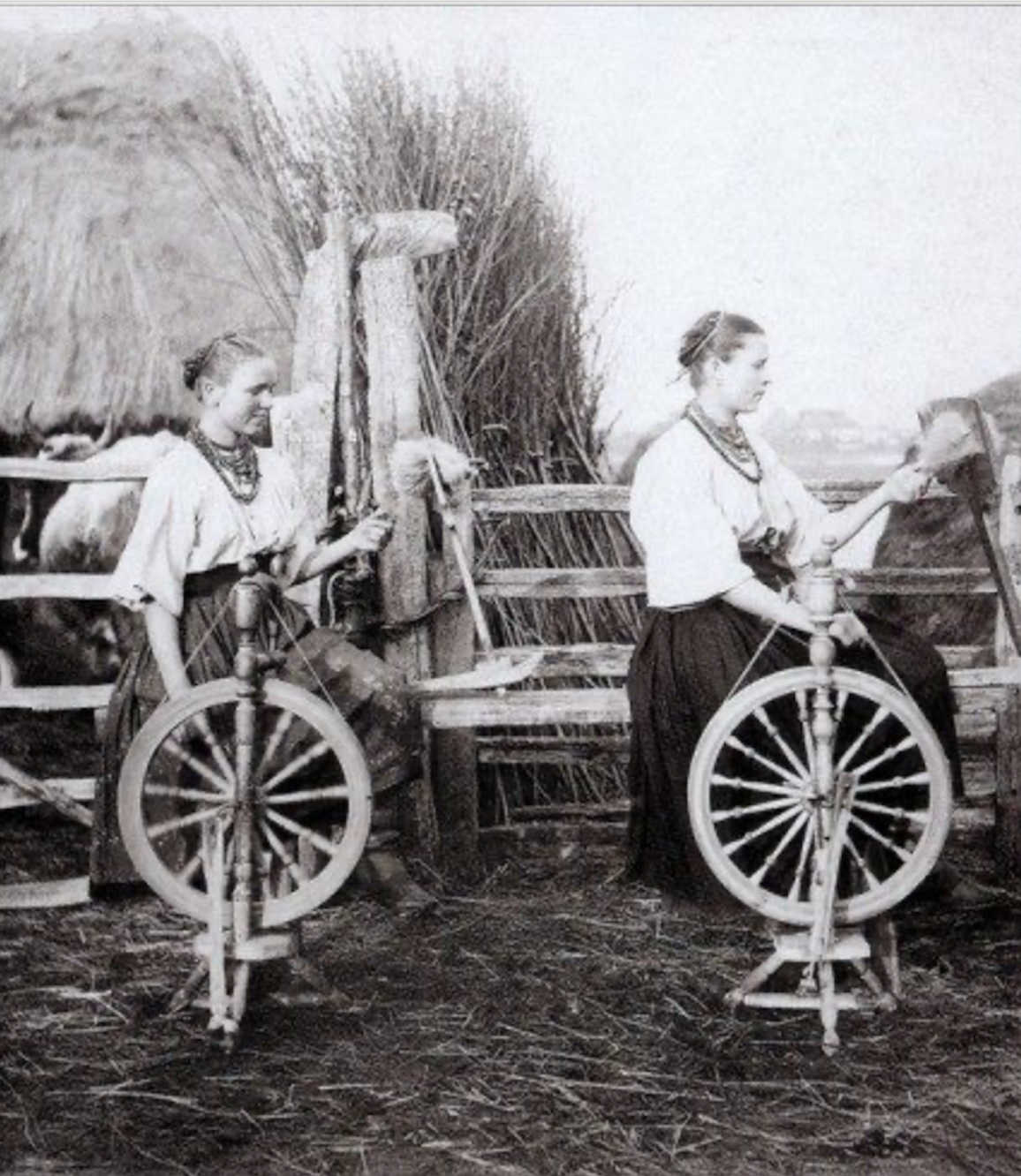
Processing
Traditional techniques of processing plants into yarn relied entirely on natural resources. After harvesting, the plant was left in the fields for weeks, exposed to rain and sun. This process allowed cellulose to detach from the rest of the plant. What remained was the initial raw material for the yarn, which had to undergo a series of manual processing steps before being transformed into threads.
Weaving
In every Ukrainian home, a loom was a common sight. Weaving was a task saved for the colder and darker autumn days after the harvest season. While weaving was traditionally women’s work, there were a few men who enjoyed the craft. To hide from villagers’ gaze, some men would wear a headscarf, making themselves invisible to passersby glancing through the house window.
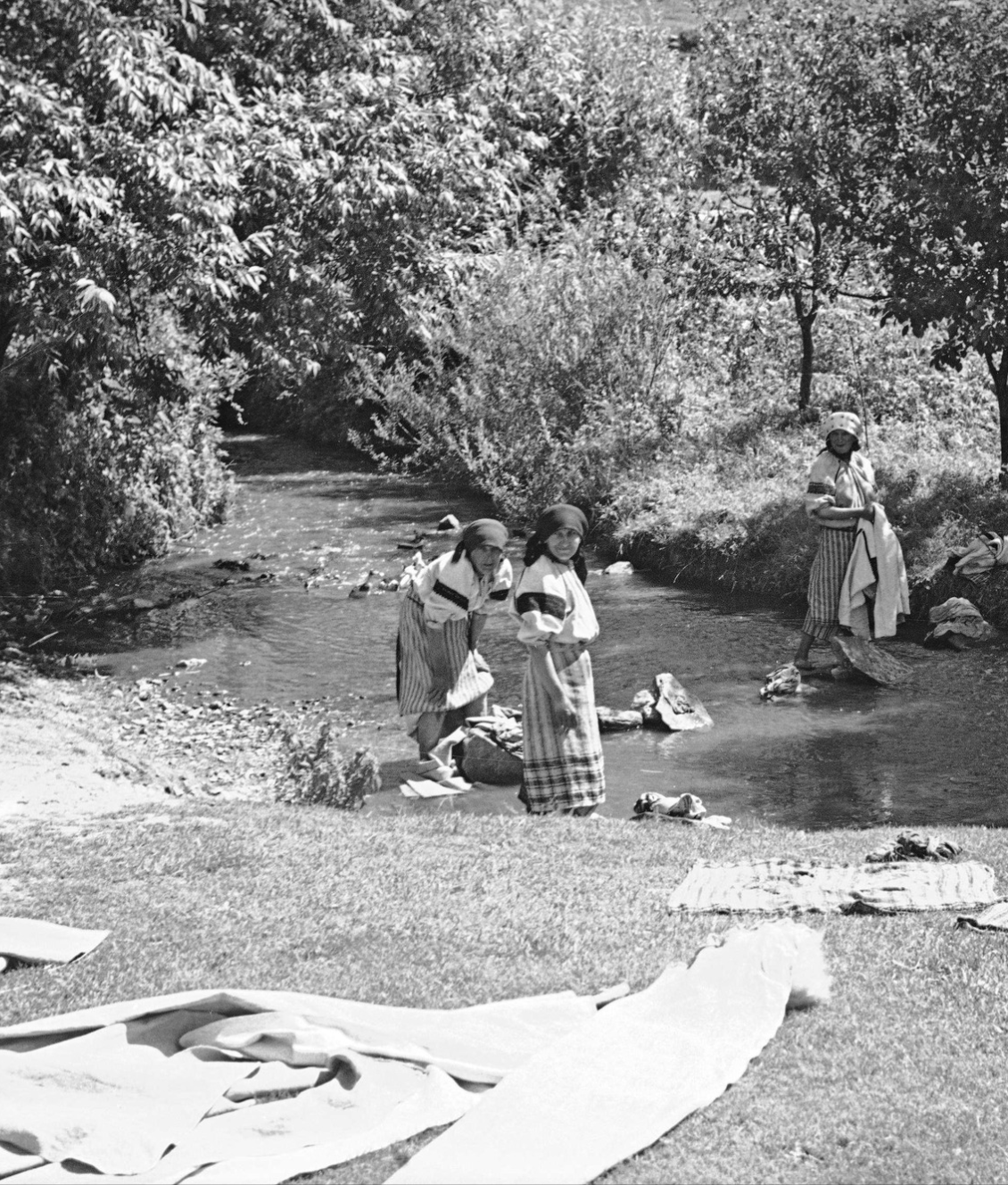
Finishing
Once the fabric was woven, it underwent the final stages of treatment to achieve lighter color shades and a softer texture. There were two common methods employed. Hemp and linen were spread out in the sun for days to allow the sun to naturally bleach the fabric and impart lighter colours. Alternatively, women would use the swift waters of nearby streams and rivers. The fabric would be immersed in the fast currents until it acquired softer and paler hues. Sun bleaching is known to produce warmer white shades, while the river method tended to result in grayer and cooler tones for the material.
Embrodiery
Finally, once the fabric had become light and soft, it was ready to be transformed into garments. Hemp and linen were utilised for nearly every type of clothing an individual might require. The most renowned and cherished piece of traditional Ukrainian attire is the Vyshyvanka – an embroidered shirt. The significance of the Vyshyvanka goes beyond its aesthetics. In addition to embodying zero waste design, functionality, and intricate embroidery, Vyshyvankas also held deep symbolism. Through embroidered elements, the Vyshyvanka could indicate a person’s place of birth and sometimes even their family name. However, seamstresses also incorporated symbols and motifs intended to safeguard the wearer and act as a talisman throughout their life journey. The well wishes and positive intentions were conveyed through the craftsmanship of Ukrainian women – a connection with fashion that we strive to rekindle.

Discover Collaborative Opportunities
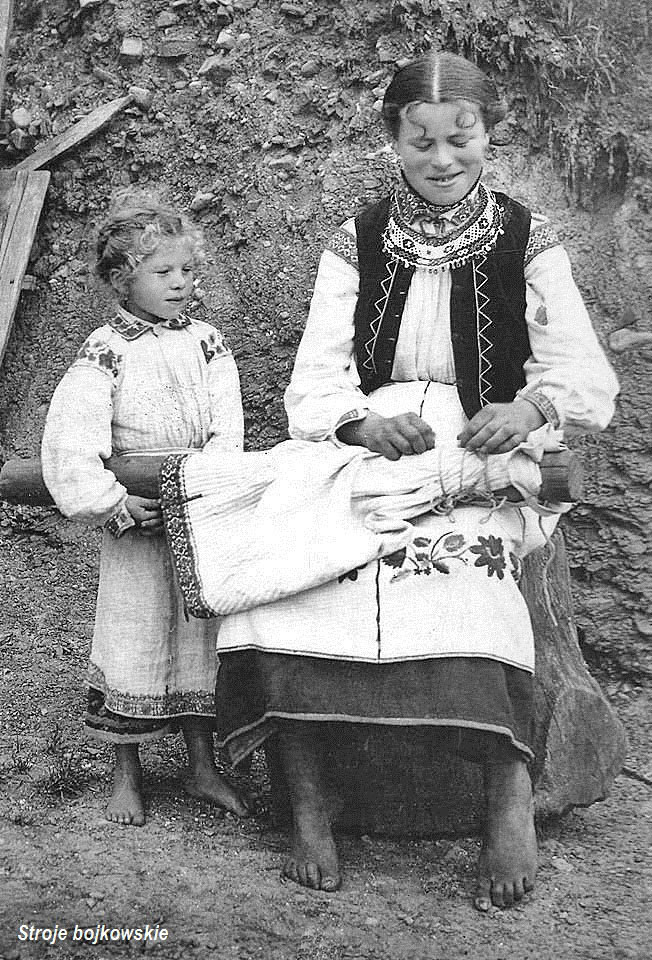
Ready to make a positive impact? Learn how your brand or organisation can join forces with HERECO to champion sustainable textiles and artisans’ communities.
